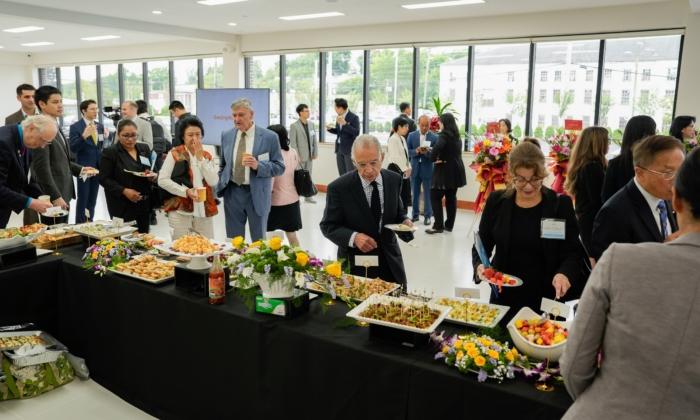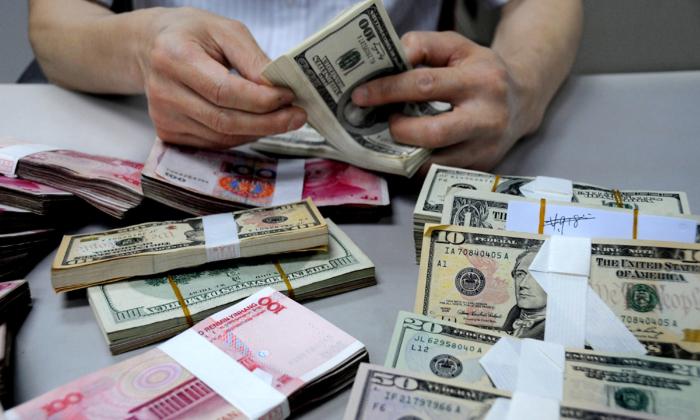China has set up a new state-owned group in charge of centralized iron ore procurement to increase its bargaining power in the international market.
China’s iron ore demand is huge. Data shows that since 2016, China’s annual iron ore imports have exceeded 1 billion tons. In 2021, China imported a total of 1.126 billion tons, accounting for nearly 70 percent of China’s iron ore consumption that year. Domestic iron ore resources are primarily of poor grade, and domestic output is low, making China highly dependent on imports.
Presently, global iron ore resources and supplies are highly concentrated in Australia and Brazil, and sellers have dominated the market for a long time.
According to data from the U.S. Geological Survey, from 2019 to 2021, Australian mining giants Rio Tinto, BHP Group Ltd., Fortescue Metals Group Ltd. (FMG Group), and Brazil’s four major mines of Vale do Rio Doce’s (Vale’s) iron ore production accounted for more than 40 percent of global production. The iron ore shipments by sea from the four major mines account for 60 to 70 percent of the world’s seaborne iron ore.
More than 80 percent of China’s iron ore imports come from Australia and Brazil. In 2021, China imported 694 million tons—nearly 62 percent of China’s total imports—from Australia and 238 million tons—or 21 percent—from Brazil.
The absolute position of Australian mines in China’s iron ore supply puts China in a “passive” position in the iron ore price game.

China Mineral Resources Group
On July 25, the China Mineral Resources Group Co., Ltd. was established in Beijing as a wholly state-owned company and a state-authorized investment institution. According to a July 28 resolution by China Iron and Steel Association, the new Mineral Resources Group will set up an iron ore working committee with China’s major iron and steel enterprises to be independently responsible for iron ore procurement in the global market.Simandou Iron Ore Mine
China is also waiting for the Simandou iron mine in Guinea, Africa, to start production. And according to Chinese media Caixin, the newly established China Mineral Resources Group will invest in overseas mines such as the Simandou mine.In China’s game for pricing power over iron ore, Guinea’s Simandou mine is considered by Beijing as a critical mineral base that is expected to break the global iron ore supply pattern.
But, according to Mike Sun, a North American investment consultant and China expert, the planned capacity of this mine is limited, and Chinese steel mills will halt production if they run out of iron ore.
The current planned production capacity of Simandou iron ore is 100 million to 150 million tons, Sun told The Epoch Times. Even if this output can be achieved in the end, China’s annual iron ore imports exceed 1 billion tons, so China cannot do without iron ore from Australia and Brazil.
In addition, the Simandou iron ore has a big cost problem, Sun said. The mine’s initial investment in railways, wharves, and power generation facilities is huge. In the end, the CIF China price of Simandou iron ore is estimated to exceed $70-100 per ton; while the CIF China price of Australian iron ore is only about $20 per ton. The cost gap between the two is huge, and the Australian mining giant can easily generate large profits.
Since the beginning of this year, Guinea’s new government has twice suspended mining at the Simandou mine and asked foreign investors to speed up infrastructure construction.
Consolidation of China’s Key Mining Industries
China has been accelerating the merger of its major steel and other metal production companies recently.
At a conference on promoting the integration of central enterprises held in July, officials from the state-owned Assets Supervision and Administration Commission said that China’s current political and economic situation at home and abroad is grim. Therefore, it is necessary to speed up the integration between central enterprises to cope with the current complex situation.
In 2016, the Chinese Communist Party’s (CCP) State Council issued an action plan to consolidate 60 to 70 percent of China’s steel production in the hands of about 10 large groups by 2025.
According to the latest data from the World Steel Association, China Baowu Steel (No. 1), Ansteel Group (No. 3), Shagang Group (No. 5), Hegang Group (No. 7), Shougang Group (No. 9) ) were among the top 10 companies in the world in terms of crude steel output last year.
Sun said that judging by the current trend, China’s steel industry will likely eventually merge into only three to four large steel groups.
Other key mining industries in China are also accelerating the consolidation of large state-owned enterprises.
On July 24, Aluminum Corporation of China (CHINALCO) announced that it would acquire an additional 19 percent stake in China Yunnan Aluminum in cash, with a total stake of 29 percent. After the merger, CHINALCO will become the world’s largest listed aluminum company.
In December of last year, CHINALCO, China Minmetals Corporation, and Ganzhou Rare Earth Group led the establishment of China Rare Earth Group Co., Ltd., intending to consolidate resources to control rare earth prices and supply chains.





